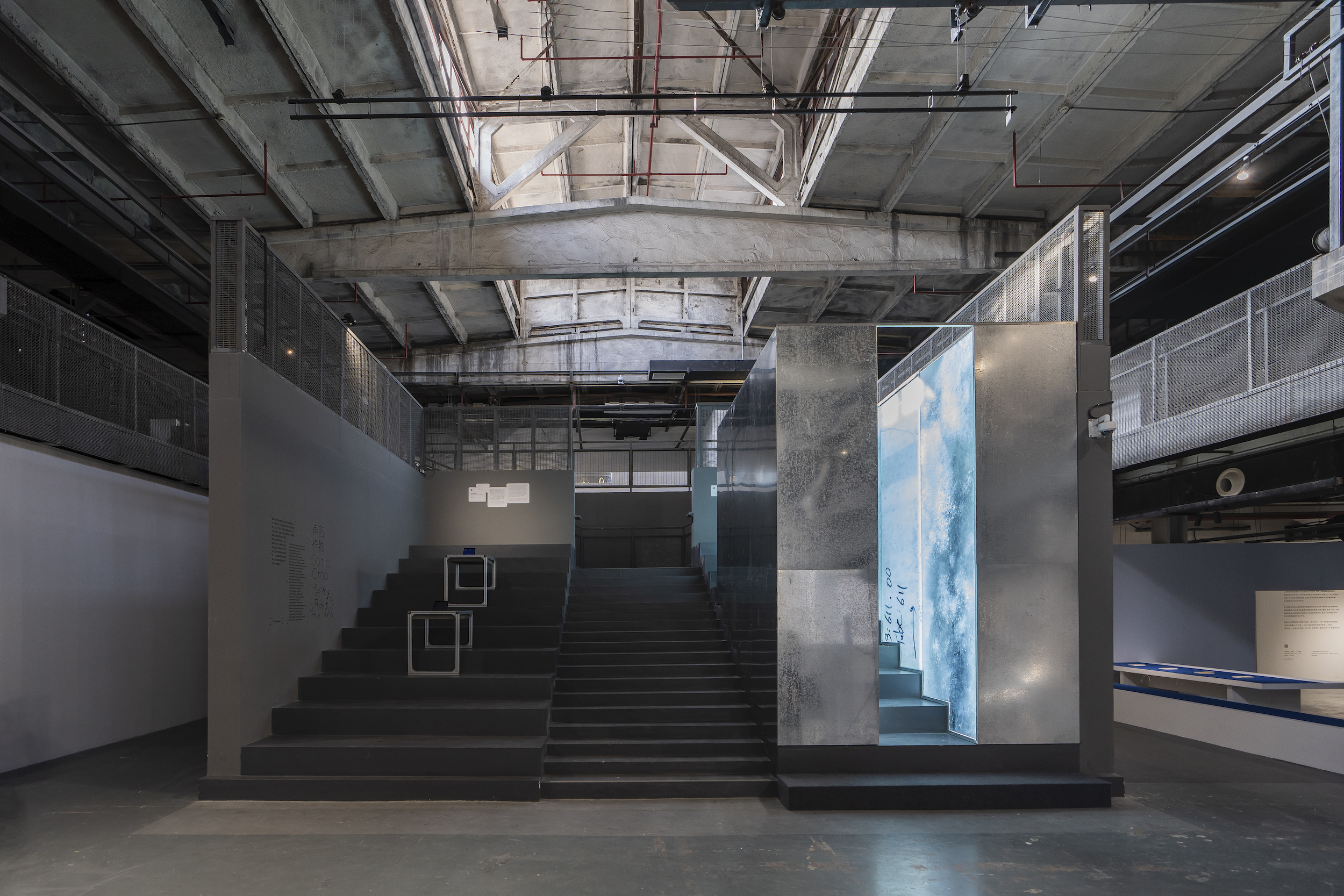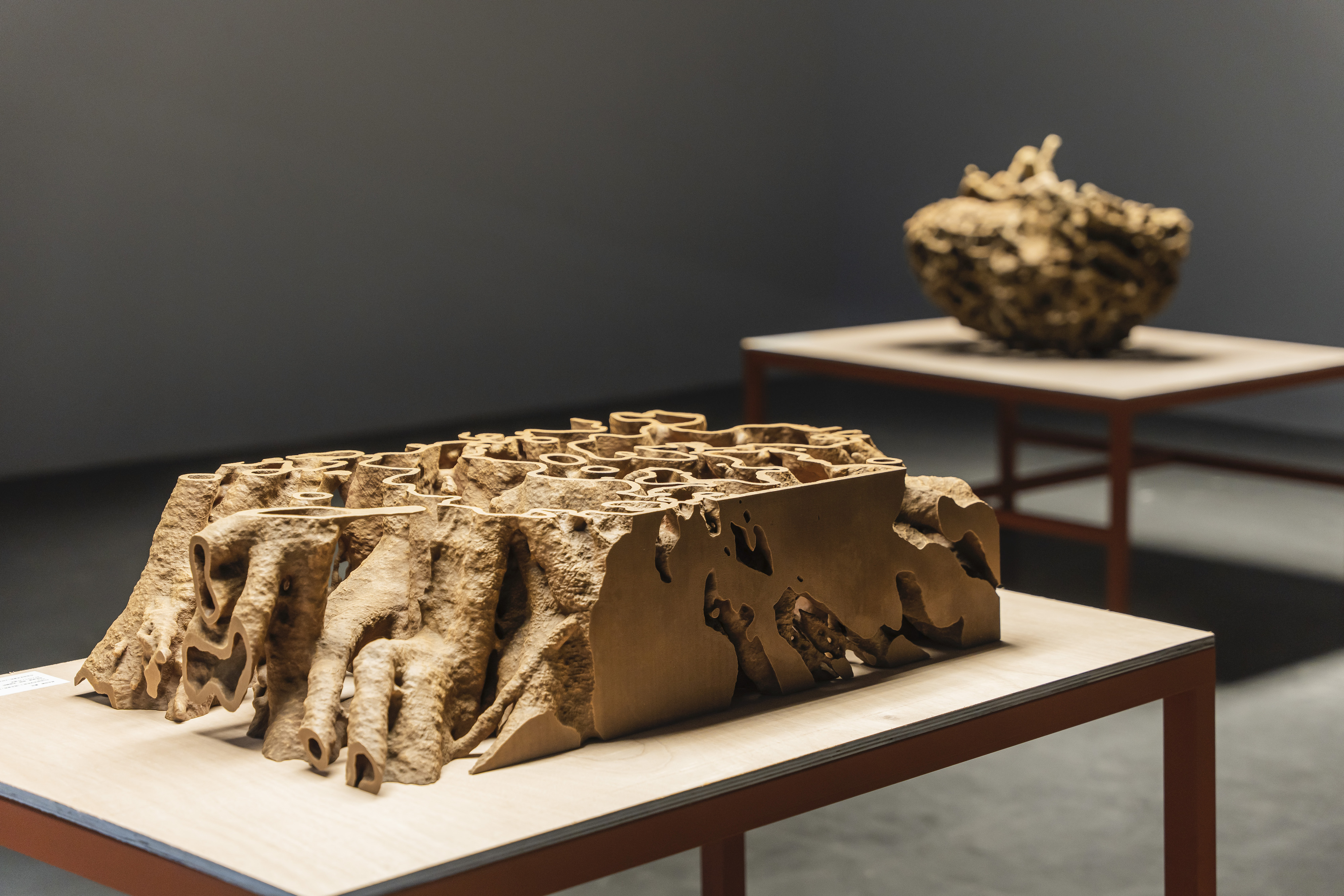Postscript of Silence 无声之后
4 Nov 2023 - 25 Feb 2024
策展人 CURATORS
助理策展人 ASSISTANT CURATOR
助理策展人 ASSISTANT CURATOR
龙星如 Iris LONG
钱诗怡 Sam Qian
陈子涵 CHEN Zihan
钱诗怡 Sam Qian
陈子涵 CHEN Zihan
艺术家 ARTISTS
Vibeke Mascini & Ella Finer/费亦宁 Fei Yining/Julie Freeman/刘窗 Liu Chuang/Nicole L’Huillier/许家维 Hsu Chia-Wei/Knowbotiq/Jeroen van Loon/Nicholas Mangan/Yuri Pattison/Diana Policarpo/Shubigi Rao/Riar Rizaldi/Susan Schuppli/Nastassja Simensky/Himali Singh Soin/苏郁心 Su Yu Hsin/Jol Thooms/Nomeda & Gediminas Urbonas/Richard Vijgen/Susanne M.Winterling/黄美婷 Cosmo Wong/张北辰 Zhang Beichen

聆听的反面是无声吗?展览“无声之后”意在探索尚未被编码入人类感知语系的万物,亦就此考察和提问那些逐渐被技术化和操作化(operational)的有关环境的知识。
以媒介化方法和“操作性的本体论”(operational ontologies)展开对于物质、生命及地球时间的理解和演绎,既是对人类世生态危机的回应,也存在于许多当代创作之中。如唐娜·哈拉维所言,一系列生命的扩延显影技术(超声、核磁共振,电子显微镜等等)逐渐让我们所关注的对象和自然处于客体的位置,让更多的观测细节渗入未知的领域,使其成为可阅读、理解并利用的对象,并纳入到以科学为底色的世界认知体系中。在“无声之后”的语境里,这种对自然知识的“操作”既包含一套探测、检验和处理数据和信号的基础设施,也隐含着一套科学或客观性驱动的行为和管理模式。对于规律、模型乃至预测的迷恋,恰恰忽视了科学感知也是一种集体的经验主义,以及被划界为“科学”内外的知识动态本身亦是权力的流动,而非真相的流动。
面对上述境况,展览以“无声”为隐喻的起点,试图通过一系列围绕声学、聆听、或声音可抵达的环境和技术展开的关键词(静音、噤声、无声物等),来打开一条非视觉中心亦非科学中心的阅读路径,投射进以媒介基础设施为轴线的现代进程与自然的纠葛之中。我们将注意力投向那些非标准化的操作,不可被解码的信号和游离、逃逸、不被捕捉和鉴定的因子。通过23位/组艺术家的创作,让这些拒绝被客体化的环境知识,无法预测和规则之外的自然本体发出声响,并在声音的发出与被采集、聆听之间的空隙中,推演一种被重新打开的认识路径。


Is silence the antithesis of being heard? The exhibition “Postscript of Silence” seeks to delve into facets of our world that have not yet been coded into the human perceptual lexicon. In doing so, it scrutinizes and challenges our comprehension of environments that are increasingly undergoing technological and operational transformation.
Contemporary artistic creation frequently engages with “operational ontologies” and a mediated approach to decipher matter, life, and geological time, as in response to the ecological crisis rooted in anthropocentrism and as a recurring theme. Donna Haraway's insights remind us that a spectrum of life-extending imaging technologies, such as ultrasounds, MRIs, and electron microscopes, is gradually casting the objects of our inquiry, as well as nature itself, into the role of the observed. This enables us to penetrate previously uncharted realms, making them accessible, comprehensible, and exploitable, and assimilating them into a worldview shaped by scientific thought. In “Postscript of Silence,” the operationalization of natural knowledge encompasses not only the fundamental infrastructure for data and signal investigation, verification, and processing but also implies a set of actions and management approaches rooted in scientific or objective reasoning. The allure of laws, models, and even predictions often overshadows the fact that scientific perception is a form of collective empiricism, and that what we label as “scientific knowledge” is a manifestation of power dynamics rather than an embodiment of absolute truth.
Confronted with this complex situation, the exhibition takes silence as its metaphorical point of departure, aiming to carve out an interpretive method that does not center solely on the visual or scientific by utilizing a series of key terms centered around acoustics, listening, or the tangible realms and sound technologies (including muting, silencing, or inaudible entities). This shift in focus direct our attention towards non-standardized operations, indecipherable signals, and fugitive, elusive, uncaptured, or unidentified elements. Through the works or projects by 23 artists or artists groups, the exhibition empowers the environments and natural entities that resist categorization, defy prediction and elude regulation to make their voices heard. Within the gaps that exist between the emission of sound and its capture or reception, the show alludes to the emergence of a reinvigorated cognitive pathway.

第一程
无声之后
聆听的反面是无声吗?对于声音的辨别和认知素来是一种认识自然的方法,展览的出发处对于依赖聆听技术去认知世界的方式进行垂问:在有限度的聆听之外,我们能否走进那个看似无声、尚未被单一听觉模型治理的世界?寂静、无声所投射出的关系性对象可以怎样被解读?是什么制造了“静默”,而我们在无声环境中究竟能听到些什么?

第二程
时间里的录制
在一段往地心、河床、冰臼、海底的探索及向幽暗生态的考古历程中,我们不断被发现或偶遇物质和基础设施共同刻录的环境记忆,这些多样的录制也提供了一种对环境音素进行非线性编曲的可能,地球环境的年表在被采样的同时,也仍然保留着许多混沌模糊的地带,这一程中,我们试图在这段地球年表中跳跃式地超链接。



第三程
被科学地分类和定位是许多自然要素(如矿产和水源)被商品化定位和流通的前提,在这一程中,我们试图探讨聆听/学习和采掘/剥削,编码和商品化,思辨被物流技术所驱动的贸易通路改造的环境状况,以及那些对于非人物种进行仿拟的技术。同时思考来自这些无声世界的非线性时间,是否能促使我们面对单一技术路径和新自由主义经济的弊端。

第四程
环境电台
我们是否有可能检测到无声环境的赫兹,甚至将深海和山脉变为某种环境电台?在这一程中,我们跟随从中微子探测器到记忆金属等多种“聆听”和转化无声世界的艺术家实验,试图探讨在对自然的工具化(instrumental)和再现(representational)之外,这些从“无声环境”中返还的声景还意味着什么?这些创作方法带来了跨物种交流的可能性,同时也考察了伴随着现代化进程中的传输(transmissional)基础设施在特殊地理环境中(岛屿、原住民传统领地)的铺设。


第五程
众声基础设施
在尾声,一组作品以思辨基础设施的视角投射某种众声(heterogeneous/polyphony)的未来,它关于基础设施多元的、异质的想象政治,有关断裂的传输网络、能量的传递转化和那些关于具象感知的叙事,并释放出以“别样”(otherwise)的方式打开未来的可能。

Chapter I
After Silence
Is silence the opposite side of being heard? Given that the identification and perception of sounds have always been fundamental to understand nature, the exhibition raises questions about our dependence on listening techniques to comprehend the world. Beyond the constraints of listening, can we explore a seemingly silent world that has not yet been governed by a singular auditory model? How can the relational aspects presented by silence and soundlessness be interpreted? What defines “silence,” and what can we actually hear in a soundless environment?

Chapter II
Record in Time
In an archaeological journey into the Earth’s core, riverbeds, glacial moulins, the depths of the sea, and the ecologies of the realms of darkness, we continue to uncover or chance upon environmental memories etched by materials and infrastructures. The assortment of recordings provides an opportunity for the non-linear composition of environmental sound elements. Throughout this expedition, we strive to leapfrog and establish connections between the numerous chaotic and nebulous terrains of the Earth’s environmental chronology, as they are sampled.

Chapter III
Sonic Crop
Scientific categorization and positioning are fundamental prerequisites for the commodification and distribution of numerous natural resources, including minerals and water sources. Within this exploration, we aim to delve into the realms of listening and learning, extraction and exploitation, coding and commodification. We also ponder the environmental alterations resulting from trade routes facilitated by logistical technologies and the technologies designed to mimic non-human species. Simultaneously, we contemplate whether the non-linear temporal aspects of these soundless realms can urge us to confront the constraints of a singular technological trajectory and the neoliberal economy.


Chapter IV
Environment Radio Station
Is it possible to detect Hertz in soundless environments, or even transform the deep sea and mountains into a kind of environmental radio station? Throughout this journey, we trace artists’ experiments in “listening” and reshaping the soundless worlds, from the use of neutrino detectors to memory metal. We will explore the deeper meanings of these soundscapes emerging from "soundless environments," moving beyond mere instrumentalization and representation of nature. These practices open up possibilities for cross-species communication while also examining the deployment of transmission infrastructures that accompany the process of modernization in specific geographical contexts, including islands and indigenous territories.

Chapter V
Heterogeneous Infrastructures
In the end, a collection of works envisions a diverse and polyphonic future through the lens of speculative infrastructure. It delves into an imaginative politics that embraces a wide range of heterogeneous infrastructures, tackling fragmented transmission networks, energy transformation and transfer, and narratives related to embodied perceptions. This approach unleashes the potential to explore the future in an alternative manner.
